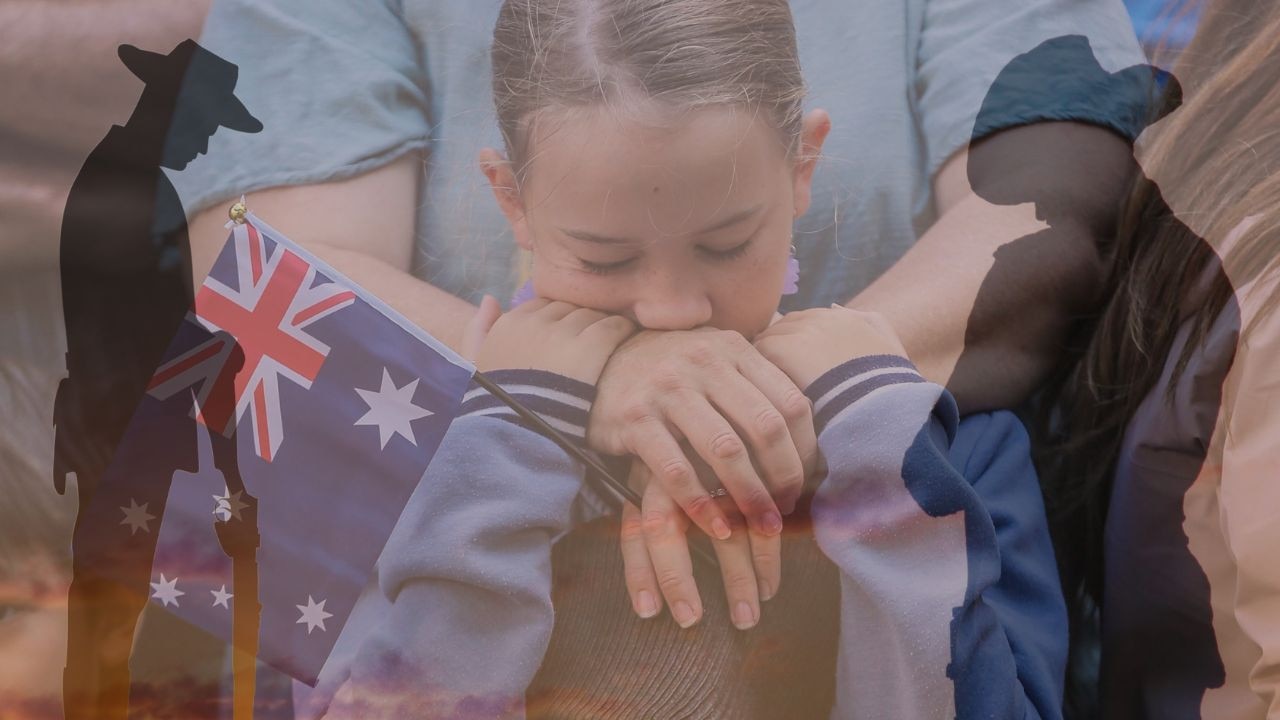Meet our everyday heroes helping Qld get through disasters
There’s no doubt we shoulder more than our fair share of natural disasters. Time and time again Queenslanders show their character in the way we not only keep each other safe but roll up our sleeves to get back on our feet. MEET OUR HEROES
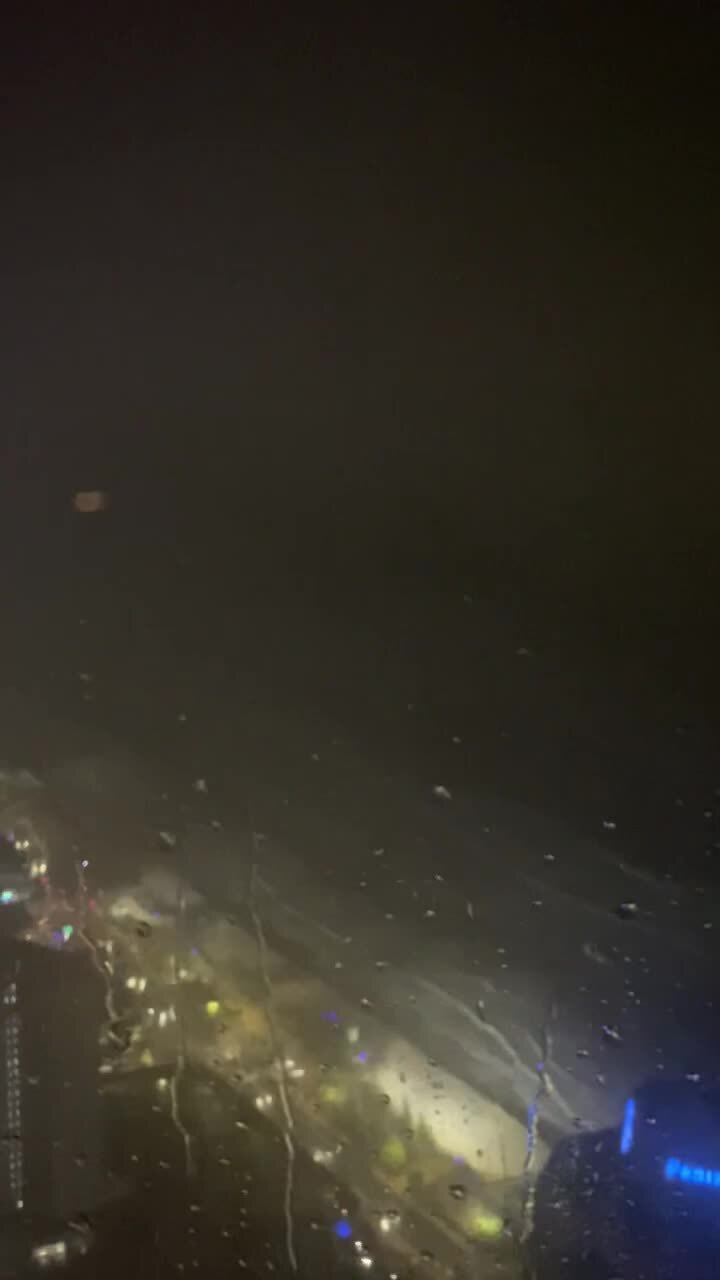
QLD News
Don't miss out on the headlines from QLD News. Followed categories will be added to My News.
As Cyclone Alfred bears down on Queensland we’re again reminded of the volatility that living in the best part of the country brings.
There’s no doubt we shoulder more than our fair share of natural disasters. Time and time again Queenslanders show their character in the way we not only keep each other safe but roll up our sleeves to get back on our feet.
Everywhere you look people are ready and willing, in all corners of the state, to put themselves in danger to help.
Helicopter pilots ready to winch people to safety, our lifesavers never afraid to pluck people from raging surf, our doctors and nurses staying overnight in hospitals, leaving their own families to take care of others.
There’s the bloke with his dinghy at the ready, the neighbours checking in on the elderly members of our community, and the midwife who has set up her car as a makeshift delivery suite, just in case there’s another sort of arrival along with Alfred’s.
These are our everyday heroes. Our safe pair of hands. These are the Queenslanders that help make this beautiful state Australia’s best.
David Miller
Three years ago David Miller saved his neighbours, including a tiny baby, from rising floodwaters – and he’s ready to do it again.
Mr Miller, who lives in Auchenflower, one of Brisbane’s most flood-prone suburbs, has his trusty rigid hull inflatable boat on standby should Tropical Cyclone Alfred unleash its worst.
“In the last few days, people in my area have asked if I’ll be available and the answer is yes,” he said.
“People seem very, very worried, not just because of the water but the wind.
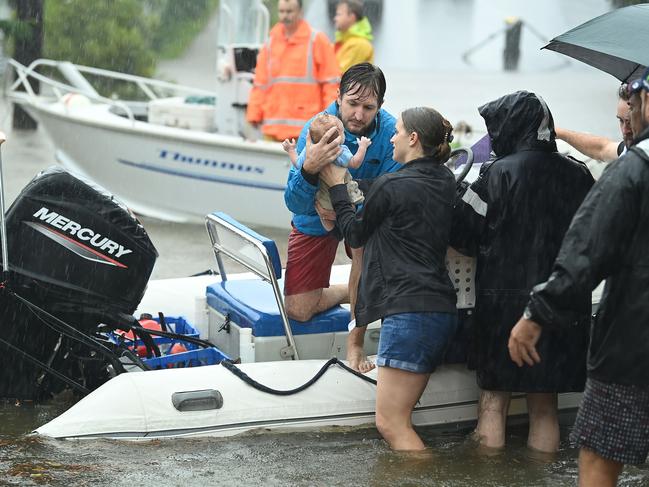
“I must admit I didn’t think twice about what I did back then, you just do what you’ve got to do, but I’ve thought about it a lot since.”
Mr Miller, a 46-year-old married father of three, became one of the unsung heroes of the devastating 2022 South East Queensland floods.
On that fateful February 28, he and neighbour Craig Harris were out in his boat trying to assist their community.
The Torwood Street home of Lana and Nick Hill was going under, and a distressed Mrs Hill waved for help and, in now famous scenes, handed over their little boy, NJ, to the pair.
“Afterwards, you reflect on how incredible it was – and potentially dangerous,” said Mr Miller, who works for the state government.
“We got very good at ducking under power lines, the water was that high, and my other concern was what was lurking below us, we must have run over a couple of cars, which would have been right-offs anyway.”
“Cyclones and severe weather events are not unusual for me – I grew up in Cairns – but I understand they make people very nervous and we all have to be prepared.”
Will Ashley
They’re renowned as “the Gold Coast’s finest” – and Glitter Strip lifeguards are ready to spring into action as soon as Cyclone Alfred finally makes landfall.
Coast beaches have been closed all week as monster waves as big as 12.3m pounded the strip.
Chief lifeguard Will Ashley said lifeguards had been ordered not to enter the ocean over the last two days as the cyclone swell reached a crescendo, with members of the public foolhardy enough to risk their lives “on their own”.
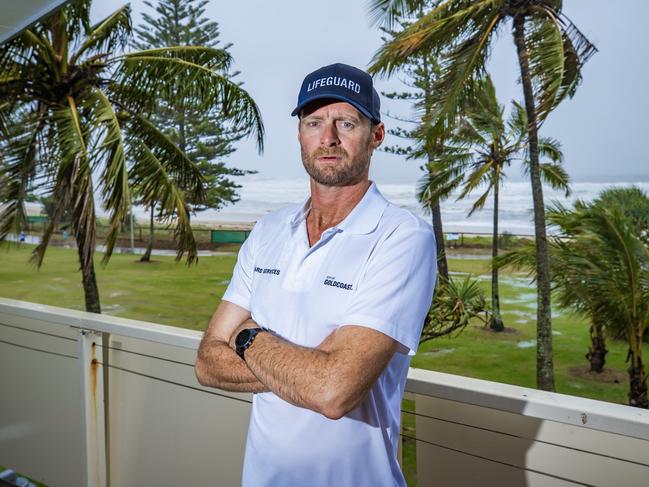
But he said his guards were still on standby for any beach incidents and were prepared for action as soon as Alfred passes.
“As soon as it starts to clear, people are likely to want to start flocking back to the beaches in big numbers but we’re urging them to stay away for at least a few days,” he said. “There’s going to be a lot of severe erosion, debris and other hazards and it won’t be safe.”
He said Gold Coast City Council crews would move rapidly to repair the beaches once the cyclone passes.
Hannah Faul
Midwife Hannah Faul is on duty this weekend for home births and, like many dedicated medics across the state, nothing is going to stop her reaching her patients when they go into labour – not even a cyclone.
“I’m a private midwife with My Midwives and we have seven or eight women who could go into labour in the next couple of days as the weather event ramps up. We attend home births and we are all prepared to make it through hell or high water to reach our patients,” Ms Faul (above) said.
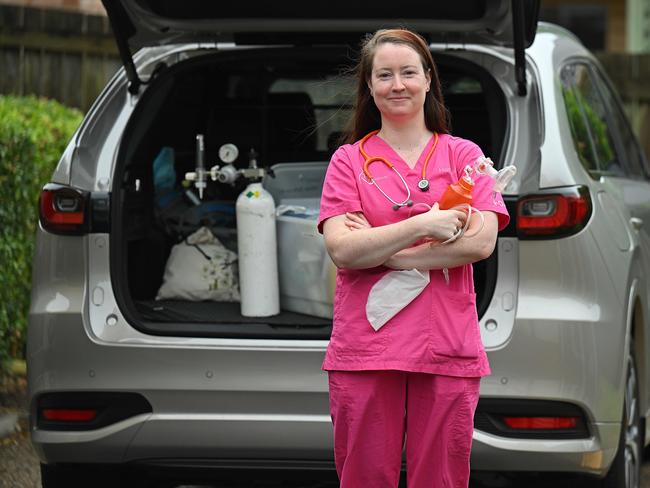
“Of course we have had training for this kind of possible natural disaster and we know when to draw the line at putting our own lives at risk but we will do all we can to do our jobs and look after our mothers,” she said.
She said Covid had helped teach her “babies in the most difficult circumstances.”
Temporary accommodation for more than 300 clinical staff was available at Mater’s South Brisbane campus on Friday night to ensure essential patient care could continue round-the-clock.
Conference rooms and training suites across Mater Private Hospital Brisbane, Mater Hospital Brisbane and Mater Mothers’ Hospital were converted into communal sleeping areas, with staff reserving beds through a centralised booking system.
Lynsey Lawrence, 40, Nurse Unit Manager of the Intensive Care Unit at Mater Private Hospital Brisbane, said her team had been on cyclone stand-by all week.
“My overnight bag’s packed and I’m ready to stay,” Ms Lawrence said.
“We still have patients to care for in ICU and who knows what emergencies might be coming our way.
“It’s been inspiring to see the team come together. People who aren’t rostered on have been calling in to say ‘I’m ready if you need me.’”
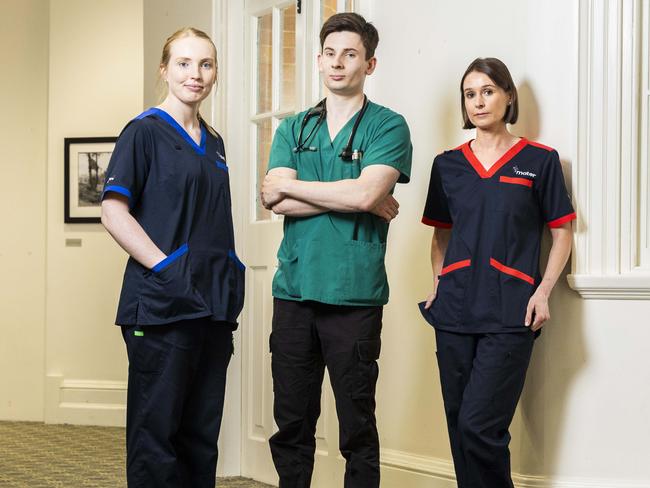
Mater Hospital Brisbane registrar Dr Louis Rischer, 27, was preparing to experience his first Australian natural disaster after moving from the UK.
“The hospital has to remain open for patients requiring emergency care, and not every patient on our wards can be discharged due to health complexities,” Dr Rischer said.
“We still have emergency cases to respond to. It could be anything from a patient deteriorating on the ward to someone needing treatment for sepsis.”
Bianca Hurley, 26, Acting Nurse Unit Manager of Mater Private Hospital Brisbane’s 9 North medical ward, was also readying to stay on campus.
“Everyone who is able to stay will be here for our patients,” she said.
“When you’re a nurse it’s part of the job.”
SES volunteers
As millions were told to bunker down in their homes, thousands of Queensland State Emergency Service (SES) volunteers have been hurrying to finish final preparations as Cyclone Alfred closed in.
Facing what could be a historic event for the South East, the slow moving system gifted time to SES crews to ensure the right resources and people were put in place.
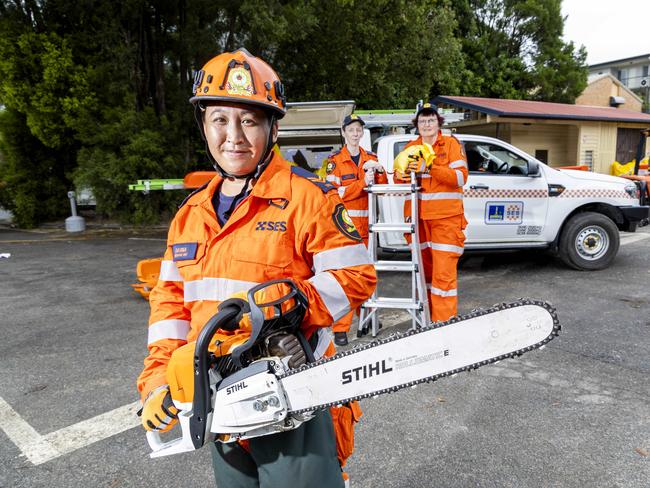
SES Chief Officer Mark Armstrong said while they have prepped teams for a “major event”, the service would have South East Queenslanders’ backs during what may be a once in a lifetime event.
“We’ve been telling the teams this is a major event, it’s going to affect us in different ways,” Mr Armstrong said.
“This is our business, this is what SES exists for, so we’ve got processes to plan and prepare.”
Officially in the response phase as of ore than 2000 volunteers who reside in the region are ready to get out to help residents as the event unfolds, with nearly 100 more from around the state travelling to pitch in a hand.
Energex staff
Harvey Brenham, Matthew Fabian and Vashti Arndt are among a 2000-strong army of hi-vis heroes ready to restore power to homes and businesses in the wake of Cyclone Alfred.
Tens of thousands of properties across the South East, most of them on the Gold Coast, had already lost electricity on Friday morning, with Alfred still 24 hours away from hitting.
But hundreds of Energex and Ergon workers including Mr Brenham, Mr Fabian and Ms Arndt have already held briefings as they prepare to hit the road to repair power lines as soon as it’s safe.
“It’s the apprehension of what’s coming – we all know it’s coming but it’s such a slow- moving beast,” said Mr Brenham, a 20-year Energex veteran who has worked through multiple major disasters, including North Queensland’s Cyclone Yasi in 2011.
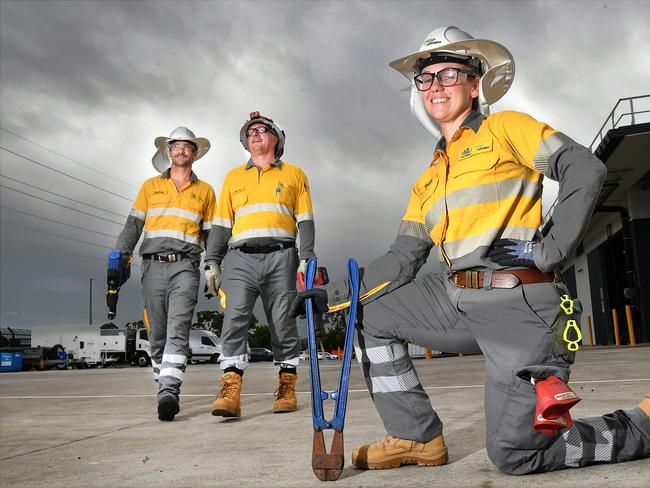
“We really don’t know what’s going to happen until it hits. But we’ve got fantastic safety stuff, tools and equipment and great procedures and everybody is just focused on what needs to be done.
“Our motto of ‘Go to work, come home safely’ is paramount for us.”
Energex has warned some Gold Coast residents could be without power for a week after flying debris took out a major substation at Tugun.
All repair work on the Coast and Moreton Bay islands has been suspended until Cyclone Alfred passes.
Swift water rescue
The state’s swift-water rescue crews will put their lives on the line to help stranded Queenslanders as Cyclone Alfred closes in on the South East.
More than 180 swift-water crews stationed along the coast are prepared and ready to throw themselves into danger to respond to emergency calls and evacuations as the system crosses the coast on Saturday.
Queensland Fire and Rescue Inspector Mark Crowe said they had moved some resources further south in preparation for up to 800mm of rain in some parts, storm surges and major flooding.
“We’ve got a highly dedicated team and we demand a lot of that team,” Inspector Crowe said. “Even though they know they’ve got their family at home, they are focused on what they’re doing out in the field.
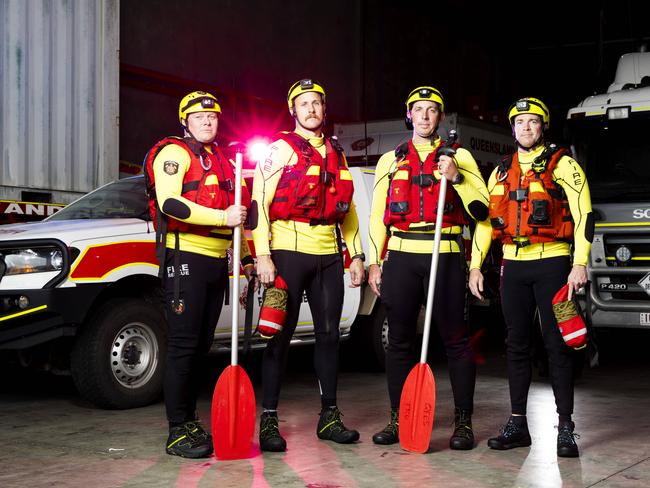
“The 2022 floods, the Ingham floods last month – everything tells us they will put themselves in dangerous situations and they are prepared for it, they are ready.”
Fifty extra crews with years of experience in cyclones have been flown in from North Queensland to bolster 130 crews in the South East.
They are stationed between Maryborough and the Gold Coast, but most resources have been saturated between Brisbane and the border, as well as inland areas, in line with warnings.
Meanwhile, Queensland State Emergency Services Chief Officer Mark Armstrong said they have prepped teams for a “major event”.
“This is our business, this is what SES exists for, so we’ve got processes to plan and prepare,” Mr Armstrong said.
More than 2000 volunteers who reside in the region are ready to get out to help residents as the event unfolds, with nearly 100 more from around the state travelling to pitch in a hand. Storm pods, chainsaws and tarps were trucked in from Central and North Queensland.
Redcliffe neighbours
Neighbours across Redcliffe are preparing to do “whatever it takes”, as they band together to help each other out in the aftermath of Cyclone Alfred.
In the lead-up, neighbours in Scarborough, Redcliffe, Woody Point and Newport were out on the streets helping elderly neighbours, moving furniture, sandbagging and constantly checking on each other.
But many say they are prepared to do whatever it takes to help the community through the challenge.
Mike Mabbutt who lives on a street that flooded badly in 2022 says he will help his neighbours in the aftermath after having been through eight cyclones up north, including Cyclone Yasi.
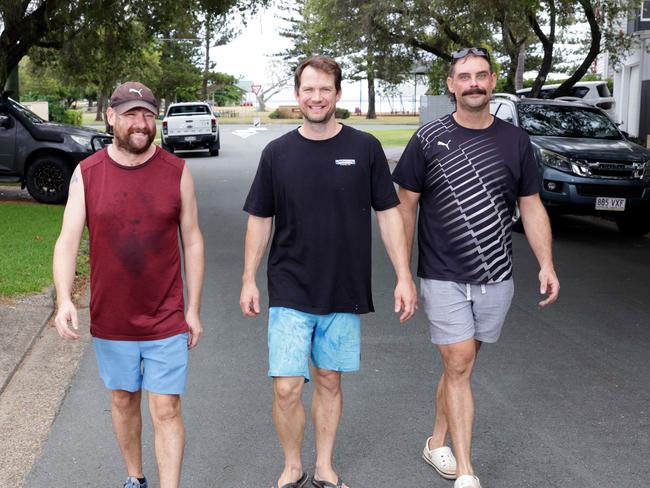
“It brings out the best in humanity based on previous experiences up in Cairns and Far North Queensland where I used to live, where everybody just bands together, particularly for the elderly who can’t really do anything about moving heavy objects and things like that,” he said.
Martin Pollock, Dean Hammersteister and Richard Mc-Morn who live in Scarborough, say they will be ready after Alfred hits.
“We’ve exchanged phone numbers (with the neighbours) and we often just go for a walk around and check on each other and check how everyone’s going,” Mr Hammersteister said. “We’re all willing to help each other, we pretty much all know each other. I think it’s the Australian spirit to help each other out in a time of crisis.”
Defence Force
The Australian Defence Force is ready to roll out to help Queensland’s community recover after Cyclone Alfred hits the southeast.
About 70 troops are on standby with 30 vehicles and two helicopters to respond once the cyclone passes.
Brigadier Richard Peace, Commander of Joint Task Group 629.3, said the army had more personnel on standby if they were requested.
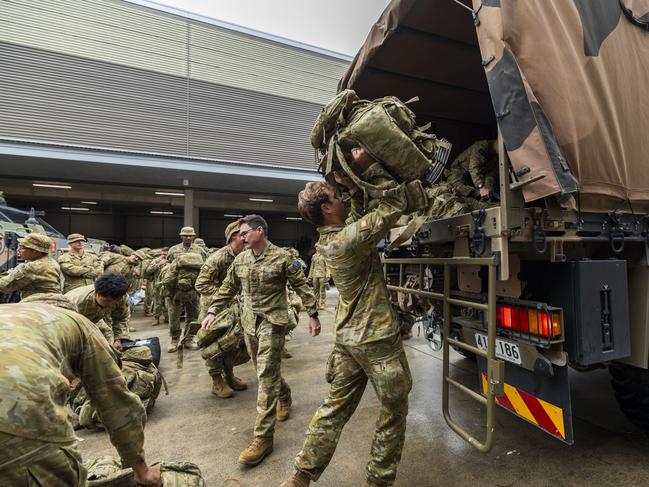
“We’re ready and able,” he said. “It will just come back to how bad the damage is and how much support the Queensland Government and the state disaster mechanisms need from the ADF.”
Brigadier Peace said the ADF was working closely with the National Emergency Management Agency and state government authorities.
He said there were full-time, part-time and reservist personnel involved, some of whom had families living locally.
Originally published as Meet our everyday heroes helping Qld get through disasters


